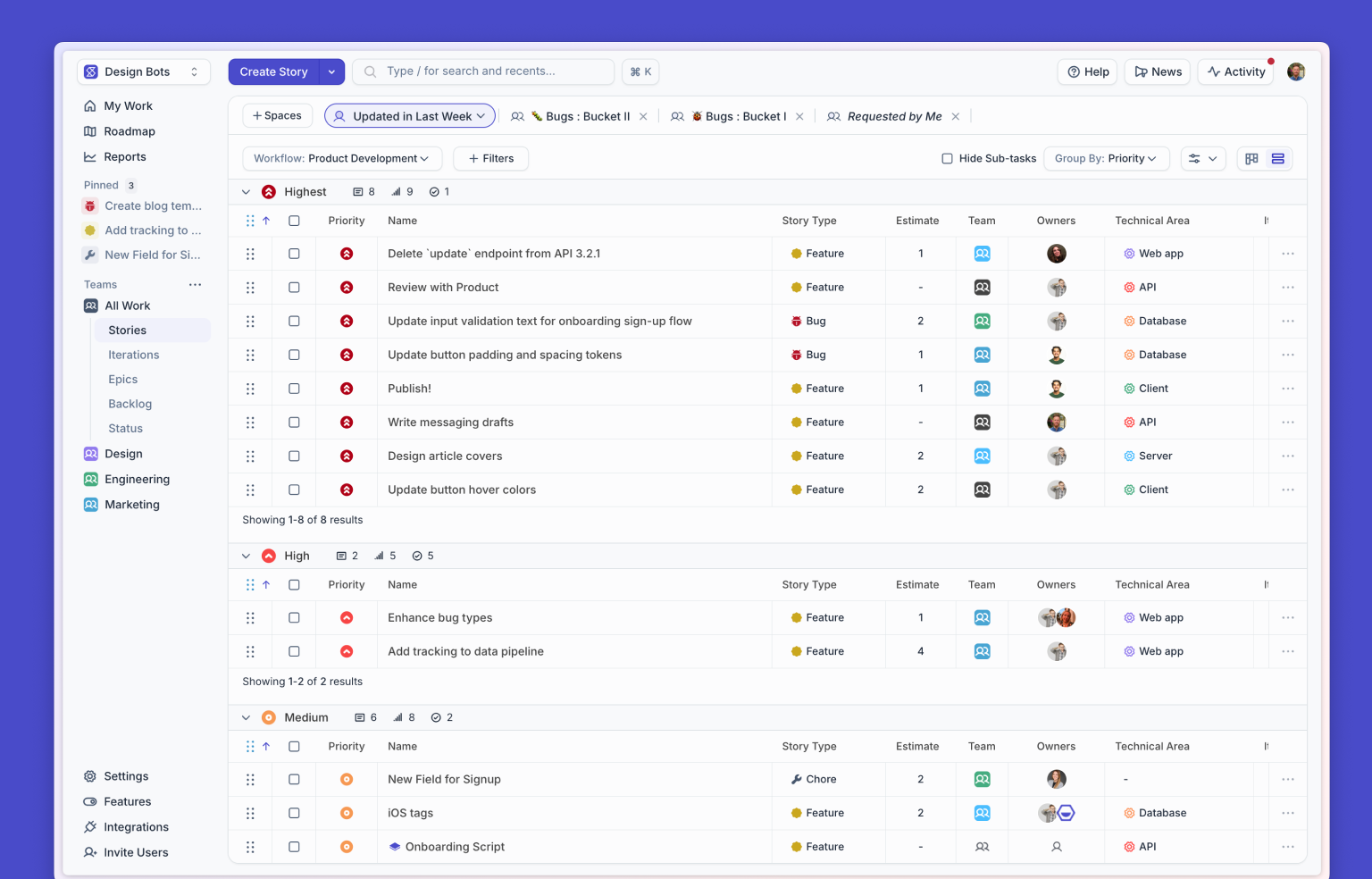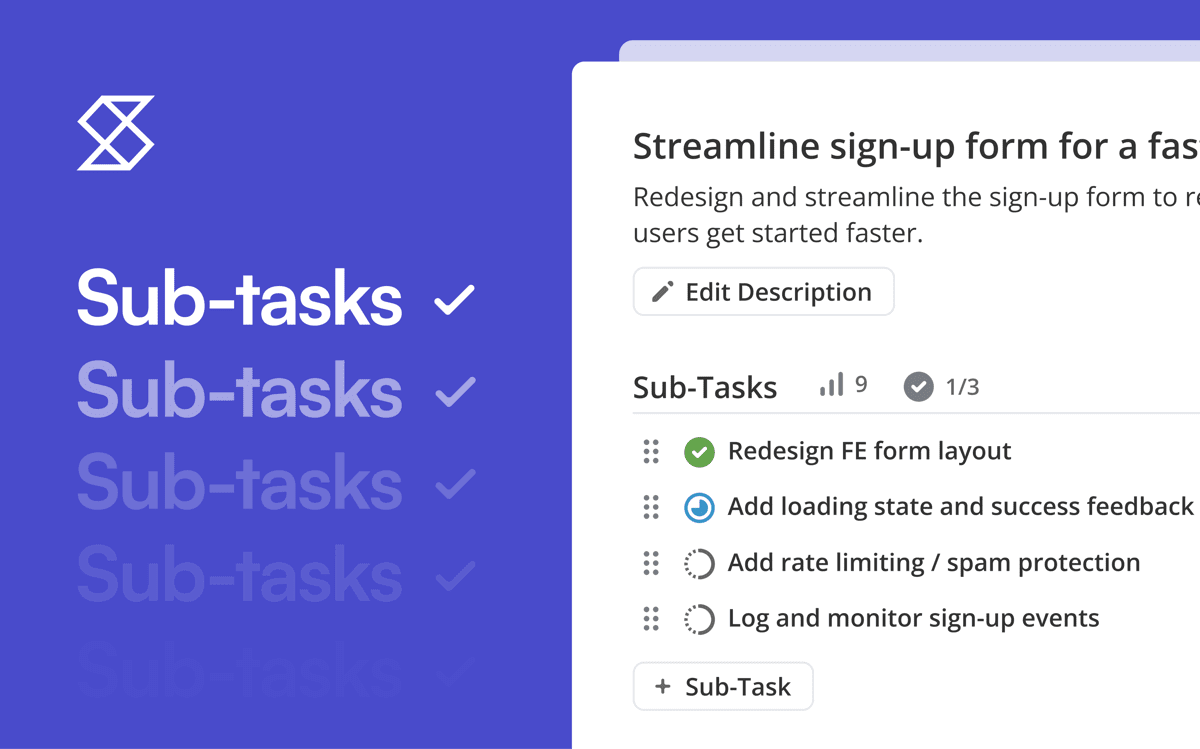Trello helped teams visualize work before “boards and cards” became the default project management language. But as engineering teams grew more complex—with sprints, objectives, pull requests, and dependencies—that simple board started feeling more like a wall.
If you’ve ever tried to manage a sprint in Trello, you know the pain: checklists for sub-tasks, labels as epics, and one wrong card move that breaks your entire workflow. It’s great for brainstorming. It’s not great for shipping software.
So if you’re looking for tools built with product and engineering in mind, this list is for you. Here are the best Trello alternatives for engineering teams in 2026 and how they compare when it comes to speed, structure, and integration.
Why You Might Be Looking for Trello Alternatives
Trello is simple and approachable, which made it famous. But engineering teams need more than lists of cards. Here’s why many outgrow it:
1. You need hierarchy, not just boards
Engineering work has layers: Objectives, Epics, Stories, and Sub-tasks. Without hierarchy, teams lose visibility into how daily work connects to roadmap goals. Trello’s flat structure makes it hard to plan or measure progress across objectives.
2. You want integrated context
Modern product teams rely on GitHub, Slack, and CI/CD systems. Trello’s integrations are limited: it doesn’t sync commits, branches, or pull requests, so engineers end up updating cards manually instead of focusing on code.
3. You care about velocity
As your team grows, you’ll want sprint metrics, cycle times, and velocity tracking. Trello doesn’t support native reporting for agile metrics, which means you’re stuck managing add-ons or spreadsheets to understand throughput.
4. You need clarity at scale
When teams expand beyond one board, chaos follows. Cards get duplicated, epics get lost, and stakeholders start asking what’s actually shipping next. Tools built for engineering connect daily work to goals automatically.
Best Trello Alternatives for Engineering Teams
Shortcut: Built for Modern Software Teams
Shortcut gives engineering and product teams the structure Trello lacks while keeping things fast and intuitive. You get Stories, Epics, and Objectives out of the box, along with deep GitHub and Slack integrations that keep work and communication in sync.
Shortcut makes sprint planning, roadmap tracking, and reporting feel natural. Velocity charts, cycle time metrics, and real-time updates show progress without any extra setup.
Key advantages of Shortcut over Trello:
- Hierarchy built in (Stories, Epics, Objectives)
- Deep GitHub, GitLab, and Slack integrations
- Native velocity and progress reports
- Clean, fast UI built for software workflows
- Privacy-focused and SOC-2 certified
Pricing: Free plan for small teams; paid plans start at $8.50 per user per month.
Linear: For Fast-Moving Engineering Teams
Linear is built for speed and precision. Its minimal, keyboard-first interface makes it one of the fastest tools available for issue tracking and project planning. It’s designed for engineering and product teams that want to stay focused on momentum, not configuration.
Linear organizes work through Issues, Projects, and Initiatives, with Cycles that function like sprints and Insights for tracking progress. The design is opinionated by intent, helping teams move quickly while maintaining clarity.
Key advantages over Trello:
- Lightning-fast, keyboard-driven experience
- Built-in GitHub and GitLab sync
- Native Cycles and Insights for agile tracking
- Beautiful, minimal interface that keeps teams in flow
Pricing: Free for up to 10 users; paid plans start at $10 per user per month.
ClickUp: The All-in-One Platform
ClickUp brings everything—tasks, docs, dashboards, and goals—into one workspace. It’s a good fit for teams that want cross-department visibility and are willing to invest time configuring it.
The flexibility is powerful but can be overwhelming for developers who prefer focused workflows.
Key advantages over Trello:
- Combines docs, OKRs, and task management
- Custom fields, automations, and dashboards
- Broad integration support
Pricing: Free forever plan; paid plans start at $7 per user per month.
Jira: The Enterprise Standard
Jira remains the go-to for large organizations with complex processes. It offers deep configuration, automation, and advanced reporting. For smaller teams, though, it can feel heavy and admin-intensive.
Key advantages over Trello:
- Detailed reporting and velocity tracking
- Customizable workflows and permissions
- Enterprise-grade security and SSO
Pricing: Free for up to 10 users; paid plans start at $9.05 per user per month.
Asana: Strong for Cross-Functional Collaboration
Asana shines for visibility across teams. It’s not built around engineering workflows, but it’s great for aligning product, design, and marketing in one place.
Key advantages over Trello:
- Multiple project views (Board, List, Timeline)
- Easy stakeholder collaboration
- Wide integration library
Pricing: Free basic plan; paid plans start at $10.99 per user per month.
Notion: Best for Early-Stage Startups
Notion combines docs, databases, and project tracking in one customizable workspace. It’s flexible and budget-friendly but lacks the automation, sprint tracking, and reporting of purpose-built PM tools.
Key advantages over Trello:
- Combines docs and tasks in one view
- Flexible templates and databases
- Simple setup and low cost
Pricing: Free for individuals; paid plans start at $10 per user per month.
How Shortcut Compares to Trello
Shortcut gives engineering teams everything that made Trello simple—boards, collaboration, and visibility—but adds structure and automation that scale.
Where Trello uses lists and cards, Shortcut uses Stories and Epics that roll up into Objectives. You can connect commits and pull requests directly from GitHub, automate progress updates, and visualize delivery in real time.
The result: less manual tracking, more time for building. If Trello feels like a starter board, Shortcut feels like a full engineering command center.
How to Choose the Right Trello Alternative
Before switching tools, define what “better” means for your team. Ask:
- Do we need more hierarchy or more flexibility?
- Which integrations matter most (GitHub, Slack, CI/CD)?
- Who needs visibility? Is it just engineering or the entire company?
- Is customization or simplicity the priority?
If your team runs sprints, manages releases, and connects planning to code, Shortcut or Linear will feel like home. If you need a cross-functional workspace, ClickUp or Asana might fit better.
You Should Try Before You Switch
Switching tools takes time, but testing one doesn’t. Shortcut’s free plan lets you import Trello boards and start sprinting immediately.
Ready to move faster?
👉 Migrate from Trello to Shortcut in minutes.
FAQs
What is the best Trello alternative for developers?
Shortcut is the top Trello alternative for engineering teams. It combines Stories, Epics, and Objectives with real-time GitHub sync, sprint tracking, and integrated reporting, all in one fast, modern interface.
Which Trello alternative is best for small engineering teams?
Shortcut or Linear are ideal for small, fast-moving product teams that value speed and simplicity.
What Trello alternative works best for cross-functional teams?
Asana and ClickUp are great for organizations that need visibility across departments like marketing, product, and design. They make it easy to manage company-wide initiatives in one shared workspace.
Can I import Trello boards into Shortcut?
Yes. Shortcut includes a built-in Trello importer that transfers cards, labels, and lists directly into your workspace so you can start planning sprints in minutes.
Is Trello good for software development?
Trello works well for visual task management or brainstorming, but it lacks agile reporting, hierarchy, and GitHub integration, key features most software teams rely on.














.png)


%20(788%20x%20492%20px)%20(1).png)
.png)

